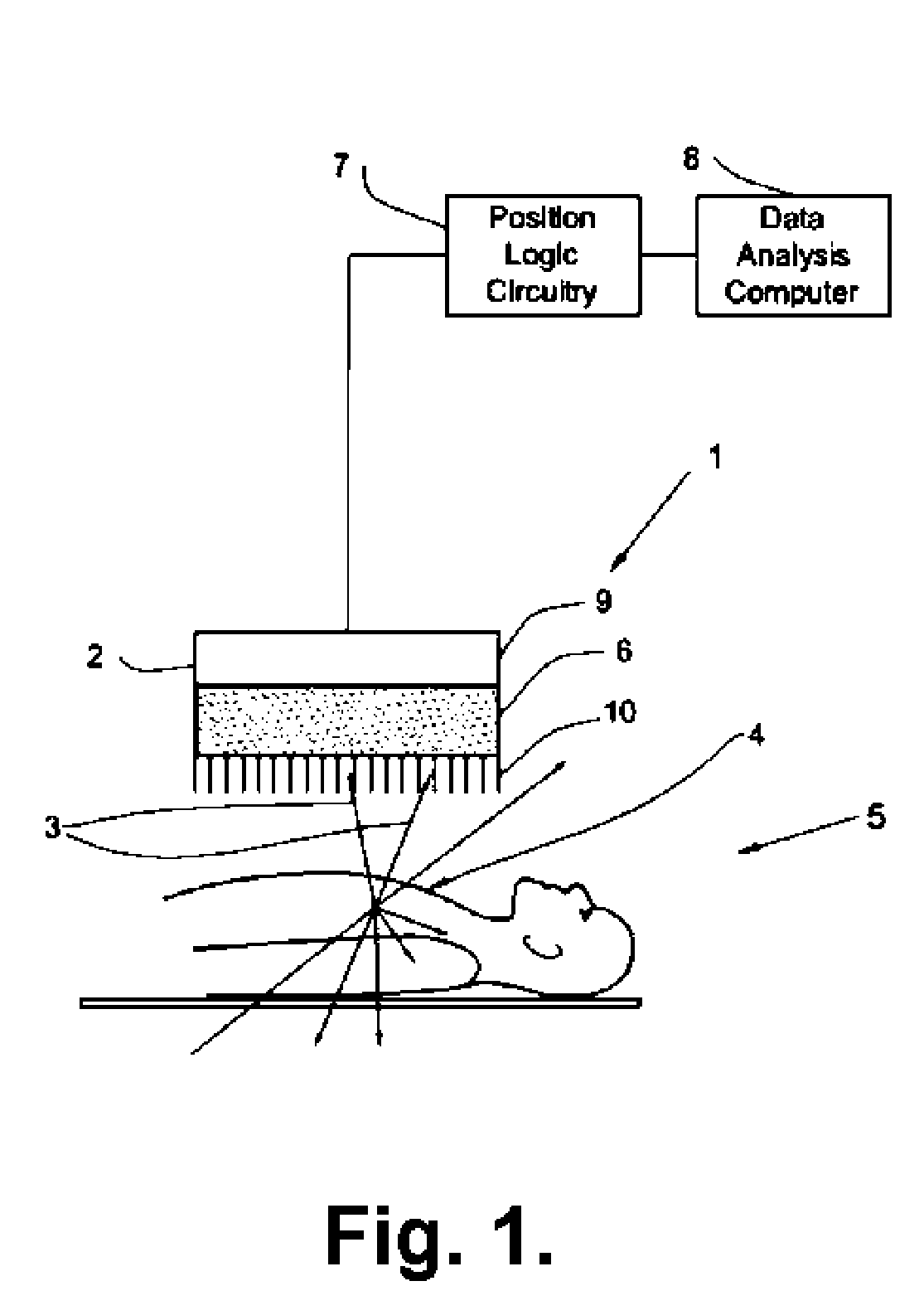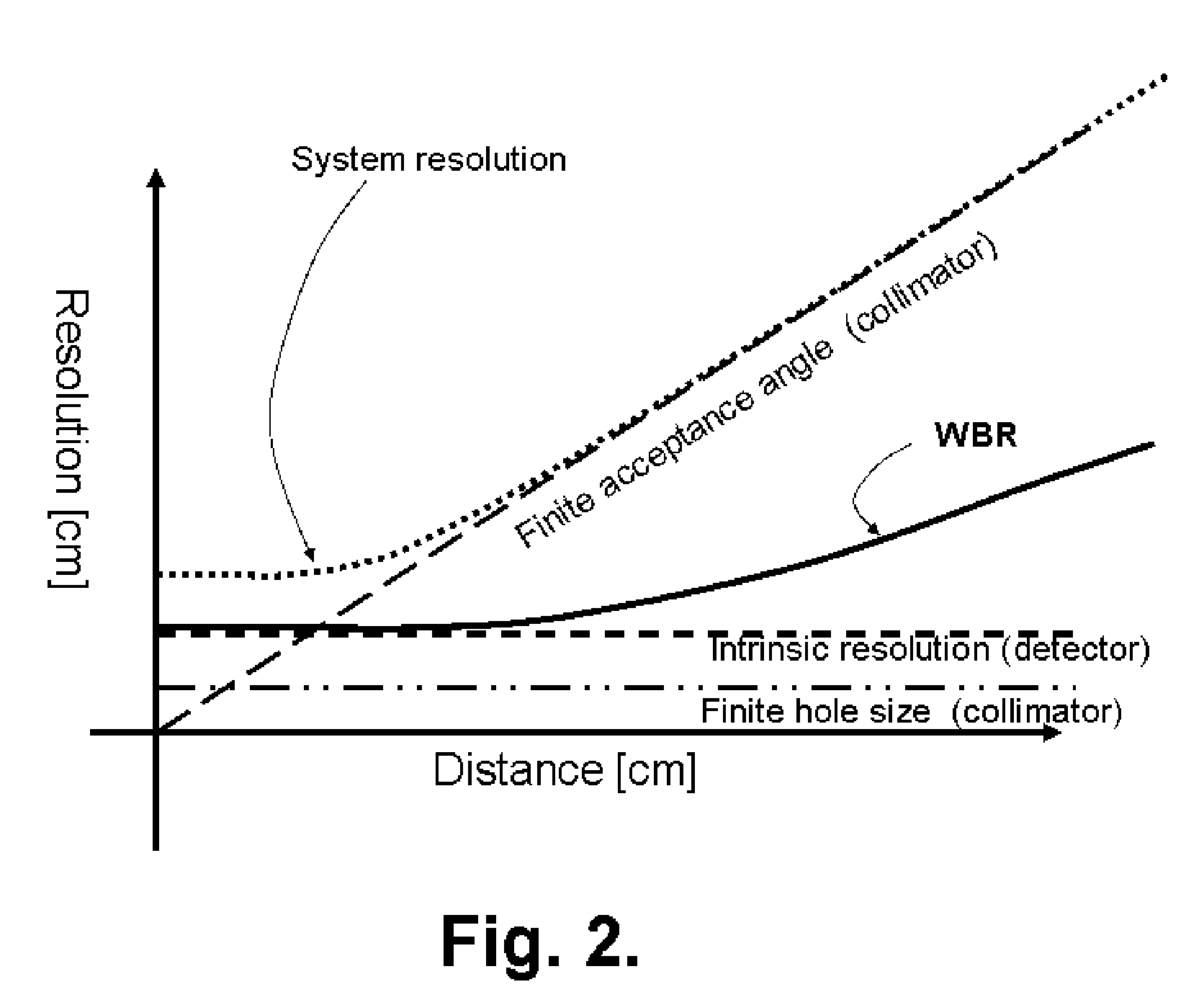SPECT gamma camera with a fixed detector radius of orbit
a spectrometer and detector radius technology, applied in the direction of instruments, radiation measurement, radiation intensity measurement, etc., can solve the problems of long acquisition time, large patient discomfort, and large overall number of patients who can be imaged in a given tim
- Summary
- Abstract
- Description
- Claims
- Application Information
AI Technical Summary
Benefits of technology
Problems solved by technology
Method used
Image
Examples
Embodiment Construction
[0065]The following detailed description is of the best presently contemplated modes of carrying out the present invention. This description is not to be taken in a limiting sense, but is made merely for the purpose of illustrating the general principles in accordance with the present invention. The scope of the present invention is best defined by the appended claims.
[0066]Reference first is made to FIG. 1, depicting a side view of a simplified schematic diagram of gamma camera in accordance with the present invention, for obtaining a SPECT image of a portion of a body that has been administered by a radiopharmaceutical substance which radiates gamma rays.
[0067]The gamma camera 1 comprises at least one detector 2 mounted above an inspected portion 4 of a body 5, a position logic circuitry 7 and a data analysis computer 8, all connected appropriately.
[0068]Detector 2 includes at least one photon detector crystal 6 facing the portion 4 of body 5. The photon detector crystal 6 may be ...
PUM
 Login to View More
Login to View More Abstract
Description
Claims
Application Information
 Login to View More
Login to View More - R&D
- Intellectual Property
- Life Sciences
- Materials
- Tech Scout
- Unparalleled Data Quality
- Higher Quality Content
- 60% Fewer Hallucinations
Browse by: Latest US Patents, China's latest patents, Technical Efficacy Thesaurus, Application Domain, Technology Topic, Popular Technical Reports.
© 2025 PatSnap. All rights reserved.Legal|Privacy policy|Modern Slavery Act Transparency Statement|Sitemap|About US| Contact US: help@patsnap.com



